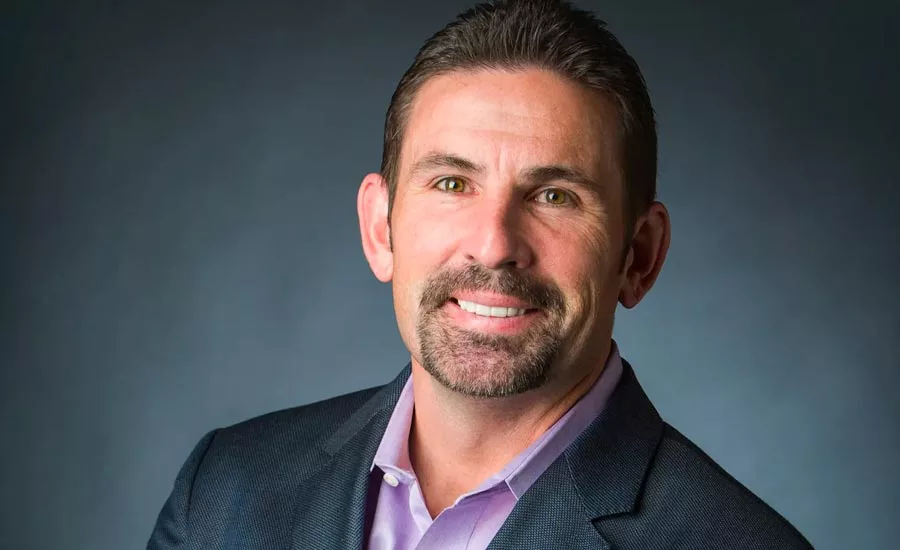Top de-escalation strategies and training for security leaders
Security and de-escalation are often intertwined. Learn how security pros implement best-in-class de-escalation strategies.

dinachi / iStock / Getty Images Plus via Getty Images

Ted Bowen, Security Supervisor, North Olympic Healthcare Network
Image courtesy of Bowen

Eric Sean Clay, Vice President of Security Services, Memorial Hermann Health System
Image courtesy of Clay

Brian Uridge, Director of Security, Michigan Medicine
Image courtesy of Uridge

Matthew Doherty, Senior Director, Jensen Hughes
Image courtesy of Doherty

David Fowler, Founder and President, Personal Safety Training Inc.
Image courtesy of Fowler
Security often comes down to a matter of de-escalation – talking an individual down before agitation evolves into violence. At North Olympic Healthcare Network in Port Angeles, Wash., Security Supervisor Ted Bowen sees it every day.
“We had a patient come in very upset, pacing the lobby. They eventually started saying that they were going to break our windows, so naturally someone called security,” he says. So Bowen started walking with the patient and that walking-and-talking quickly eased the tension. “Obviously I was keeping my safe distance and always being aware, but just by going a couple of laps around our property, we were able to get that de-escalated.”
De-escalation is a key frontline security strategy in a range of situations, from hospitals to retail settings to office environments. Many sectors, such as travel and airlines, healthcare facilities, retail and more, have seen an increase in agitated behavior or violent incidents in recent years, some spawned from tensions rising regarding mask mandates and COVID-19 protocols.
“In a lot of cases, security directors place an emphasis on law enforcement,” says Matthew Doherty, a threat and violence risk management expert with Jensen Hughes. “But there are situations – either with patients, or with things like performance improvement plans, suspensions or terminations – where you need a different approach.”
What is that “different approach,” and how does it work?
Minimizing Risk
The point of de-escalation is to minimize risk – to turn down the heat before a situation can boil over.
“Security folks deal with people who are upset, people who are stressed, people who are angry, people who are intoxicated, and even people who are violent. If you don’t de-escalate, the potential for violence increases,” says David Fowler, Founder and President of Personal Safety Training, Inc. and the AVADE workplace violence program.
Particularly in the healthcare sector, security leaders must implement de-escalation as part of their daily practice and training.
“Sometimes the patients we see have some behavioral health issues, chronic pain or chemical dependency issues, which can create a difficult situation for us. Maybe they don’t want to cooperate, or they don’t feel that they are getting the attention that they need, which causes them to escalate,” says Eric Sean Clay, Vice President of Security Services for Memorial Hermann Health System, and one of Security’s 2020 Most Influential.
“We know that 75% of all violence that occurs in any workplace occurs in a healthcare environment,” says Brian Uridge, Director of security at Michigan Medicine, a healthcare complex at the University of Michigan. “For us, de-escalation happens multiple times a day.”
The Basics
When hospital security professionals look to calm the anxious or agitated, they start with strong communication. De-escalation is fundamentally an interpersonal skill: It’s all about finding common ground with the person in distress.
“You need to listen to the person, find out the reasons why they’re so upset, or at least give them some empathy and respect. You’re not condoning the disruptive behavior, but you do have to have some empathy, some listening skills,” Doherty says.
The fundamental idea is that people who upset typically have an underlying reason for their actions.
“A lot of the times when people are escalating, they have some unmet need. They had an adverse staff interaction, maybe the person up front wasn’t giving them the right answers or they weren’t getting what they need,” Bowen says. “I train my staff to never stop talking. We always keep our verbals going. Even in a situation where they have weapons, we keep talking to the person, letting them know we’re there. The whole time we’re moving closer and closer, because sometimes you just have to take control. But at the same, we never stop talking. And it’s hard: It’s really hard to keep that caring tone in those moments.”
This approach may not come naturally to those trained to take a more authority-driven approach.
“Security professionals often want to just go in and take charge of a situation, relying upon their authority,” Clay says. “When we de-escalate, on the other hand, we’re actively listening to what that person is saying. We’re watching for those verbal cues that may indicate what they’re thinking. Sometimes we just allow them to vent. It helps them feel validated, that somebody is actually listening to what they have to say.”
Building Relationships
Uridge likens de-escalation to the law enforcement practice of community policing.
“My background is in law enforcement, at Kalamazoo public safety. We started a program there where every single day we asked our officers to go out and just do 20 minutes of foot patrol, not as an investigation, just simply 20 minutes of foot patrol,” he says. “De-escalation starts with proactively building those relationships, before you ever need to be there for an incident.”
The same approach works, for example, in a hospital setting, he says. “We treat the health system as a community: Every floor is a neighborhood, and every neighborhood has different issues. To deal with the issues of the neighborhood, you have to build trust.”
To build trust, Uridge asks security staff to make the rounds, introducing themselves to patients and staff in advance of any incidents. “We want to build a relationship, to reduce anxiety and build trust. That means we have to proactively go out and engage people,” he says.
In any sector, whether retail, transportation or corporate settings, security staff can make personal connections and broker a level of familiarity as part of their routine duties. Then, when an incident does arise, there is already a basis of goodwill in place, which in turn makes it easier to de-escalate.
Best Practices
While the idea of de-escalation is important, implementation is even more important. A number of key best practices apply when training security staff and when emphasizing de-escalation within the organization:
-
Body language: Fowler, for example, trains his people on their physical presentation.
“If you walk into a situation with an upset person and you’re face to face with them, it can be confrontational. We teach staff to approach to the side, with appropriate distance, and it has to be relaxed,” he says. “We also teach them to blade their body, to bring a shoulder forward so that you are less of a target and less confrontational. Then, you have your hands out in front of you, palms up: That’s universal for non-threatening, all over the world.” -
Added resources: Bowen says that de-escalation works best when security personnel come to the situation armed with additional resources, such as phone numbers or information for additional services or agencies.
“I carry around this pamphlet with social worker information and other resources in the area,” he says. “I’m always trying to [steer people] to more meaningful or better services.” -
Redirect: For Uridge, a key de-escalation technique is the “redirect,” a strategy for helping an agitated person reframe his or her actions and attitude.
“That might mean you take them out of the environment, you take a quick walk to change their environment. ‘Could I get you a cup of coffee, or a glass of water right now?’ When you refocus their attention, you’re often able to get to the root cause of the problem,” he says.
Building Skill Sets
For many people, de-escalation may not be their first instinct, and for that reason, Bowen makes it a point to hire frontline security staff with de-escalation skills in mind, and then to reinforce those skills with ongoing training.
“It starts with their interview: How are they acting when I give them certain scenarios? You can kind of tell just by their answer how they would immediately react,” he says.
Bowen says new security field officers will train with existing officers, achieve their international healthcare security certification and go through de-escalation and crisis intervention training. “I talk about scenarios and do some role-playing, making sure they understand our use-of-force policy. And I’ll spot check, just ask questions randomly,” he says.
Clay takes a similar approach. “It starts with just hiring the right people,” he says. “We have a self-assessment that gives us some insight into how they may handle things. When we do our interviews, we ask a lot of situational questions. ‘Tell me about a time when you had to successfully de-escalate a person.’ We look for clues on how a person is going to respond to these situations.”
Clay adds that security staff receive additional skills-building training as well, which ultimately helps with handling aggressive people and potentially violent situations. “We offer a lot of training in communication and customer service. We use role-playing, where we have simulated aggressive patients – because these are things that you’re going to be facing on a regular basis,” he says.
At Michigan Medicine, Uridge and his team place a heavy emphasis on training and rely on a number of outside providers to help with that effort. For example, the organization uses Welle Training to teach staff to recognize potentially problematic behaviors such as pacing, clenching first or raising their voices.
“They learn how to listen and to find out what people’s needs are,” Uridge says. “We also use MILO virtual training. You go into a giant room with five TV screens, and we run every one of our officers and guest services staff through multiple scenarios where they are having to de-escalate a person on the screen,” he says. “We want to immerse our people, to have them face these scenario-based virtual situations that are almost exactly what they would deal with [on the job].”
A Learning Curve
Though an increasing number of security leaders and security programs have implemented de-escalation techniques and a customer-service approach when it comes to security, this remains an evolving space.
“There is still a learning curve,” Doherty says. Some security leaders “still tend to want to remove the issue from the building, to meet aggressiveness with equal aggressiveness. But there is some progressive evolution, it is changing for the better.”
He continues, “In law enforcement, we have seen a dramatic change in the approach to these situations, because of the active shooter phenomenon in the workplace.” It has become common practice to have security personnel ready on standby, for example, when people are getting fired – not just to escort them out, but to talk them down if things get heated, Doherty says. “That’s a dramatic change.”
Looking for a reprint of this article?
From high-res PDFs to custom plaques, order your copy today!






